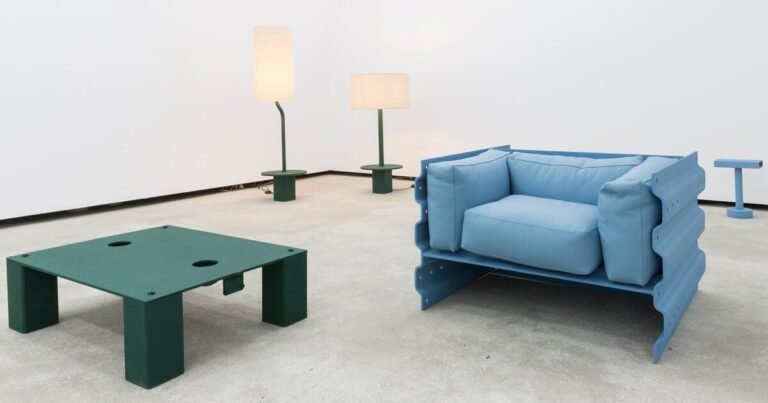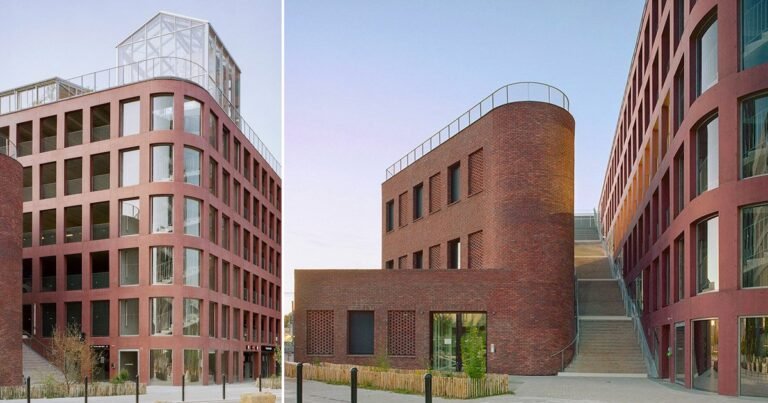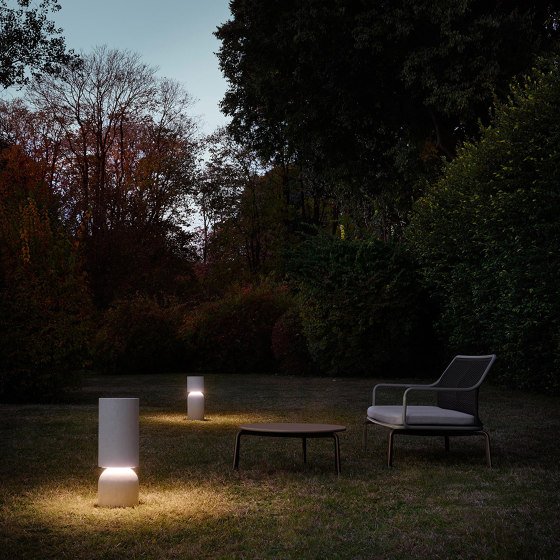hole-brick wall maximizes airflow and daylight for tiny house in vietnam
‘DAD’ house improves individual living in densely populated hanoi
NH+A architects apply a brick-hole facade to the minimum ‘DAD’ house in Vietnam, improving the quality of living space. The steady urbanization growth in developing countries impacts significantly the urban space of densely populated cities, while, also, consequently affecting the individual living space. Tiny ‘tube’ houses cramped in Hanoi’s alleys are a usual sight and an inevitable consequence. The project solves these modern-day residential problems by providing relaxing outdoor areas, sufficient natural light, and ventilation to a minimum 33 sqm housing plot. The perforated facade minimizes the ongoing concreting, using a holed brick wall and a climber trellis system for climbing plants. This material secures effective shading, ventilation, and noise reduction, and resists heat radiation. The inner layer of solid brick walls and tempered glass windows obtains privacy to the interior.
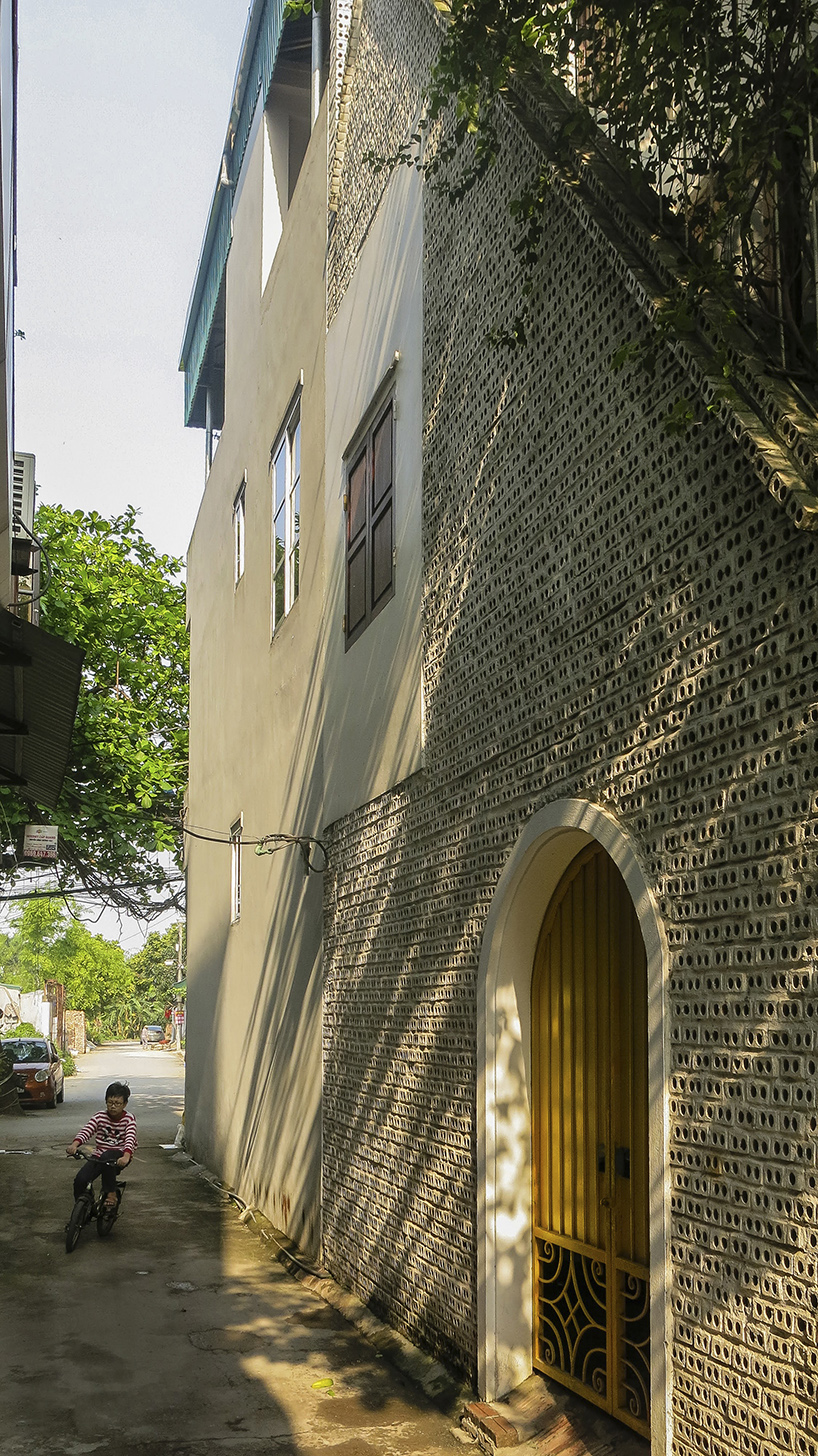
all images courtesy of NH+A architects
airflow and flexibility in the interior and private open spaces
The design process of the housing model followed by NH+A architects consists of two main components, the outer volume, and the core space. The free front and back areas, such as the parking lot, the balcony, and the garden, are designed to solve the issues of privacy, and microclimate, whereas the core is shaped for the intended living functions. The common living spaces, such as the living room and kitchen, are designed with large glass doors and windows, while small and medium-sized solid windows are used in bedrooms to ensure privacy without any interference to natural lighting and airflow efficiency. The door-window system is designed to accord with the needs of light and ventilation of the interior space. Increasing the flexibility of the interior, a sliding wooden door system is applied on the second floor, alongside versatile furniture. Minimal cabinets are integrated into beds and multifunctional wooden boxes can be stored under the living room bench. The flexible minimum plan can meet the users’ demands.
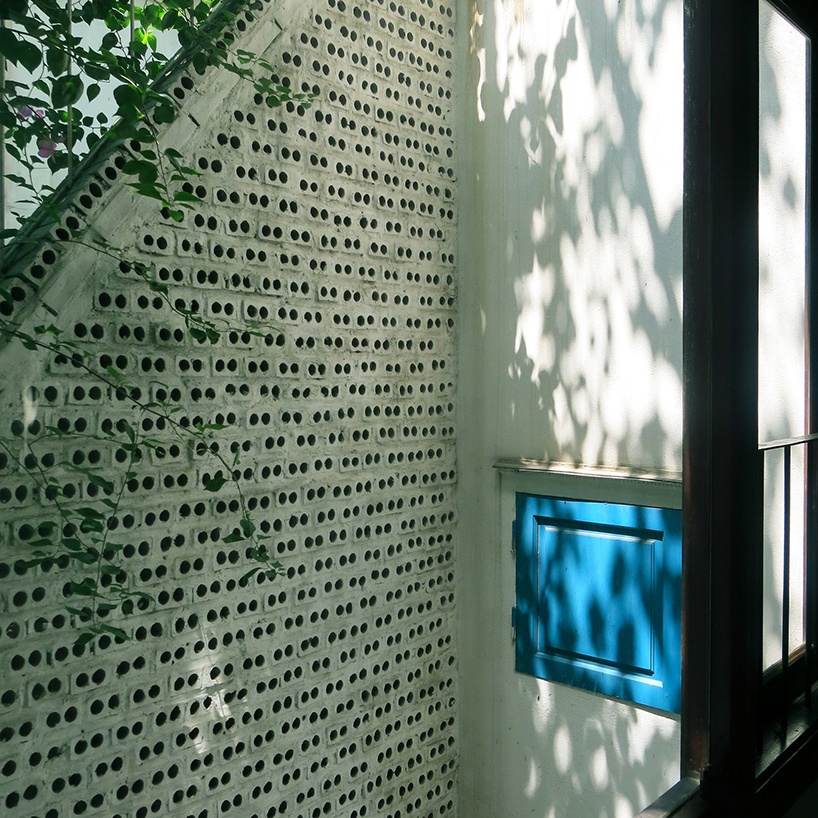
the door-window system is designed to provide light and ventilation in the interior space
vertical plantation throughout the climber trellis system
The large glass windows are protected from solar radiation by the climber trellis. The sun-blocking facade reduces the amount of solar heat that is absorbed through exposed roof surfaces. Climber trellis and rich plantation cover the north facade and the roof creating pleasant views. Along the vertical axe of the house, vines creep up the steel frames, while plantation and hanging pots decorate each floor. The flora surrounding the house reduces the temperature of the interior space in summer. This sustainable architecture orientation hopes to resolve environmental issues, such as dust and noise pollution in Hanoi.
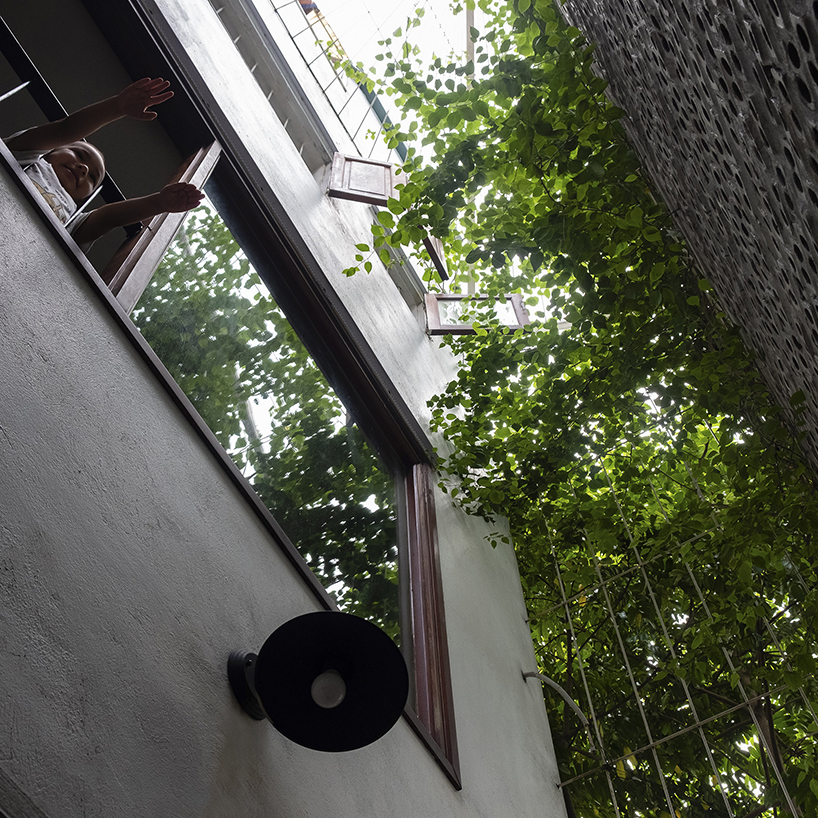
the plantation surrounding the house reduces the temperature of the interior space in summer
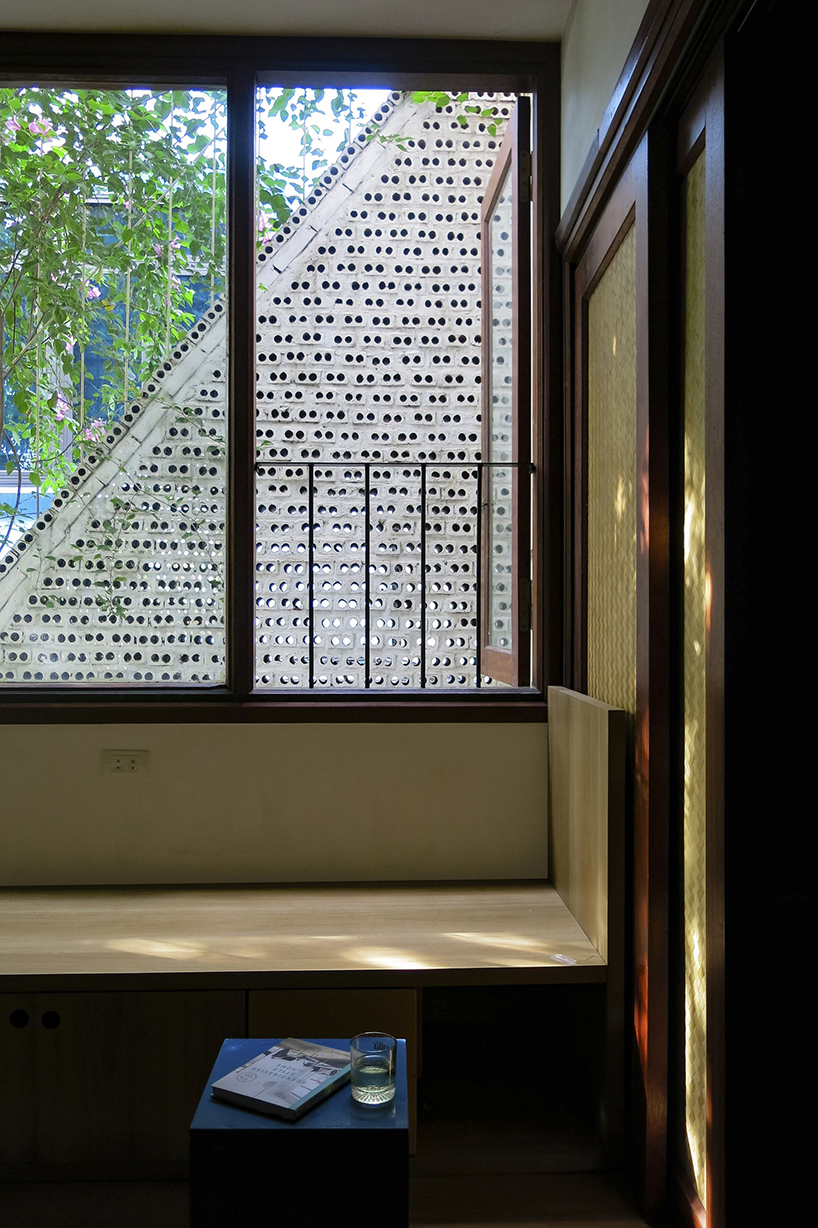
common living spaces, such as the living room, are designed with large glass doors and windows overlooking the brick facade
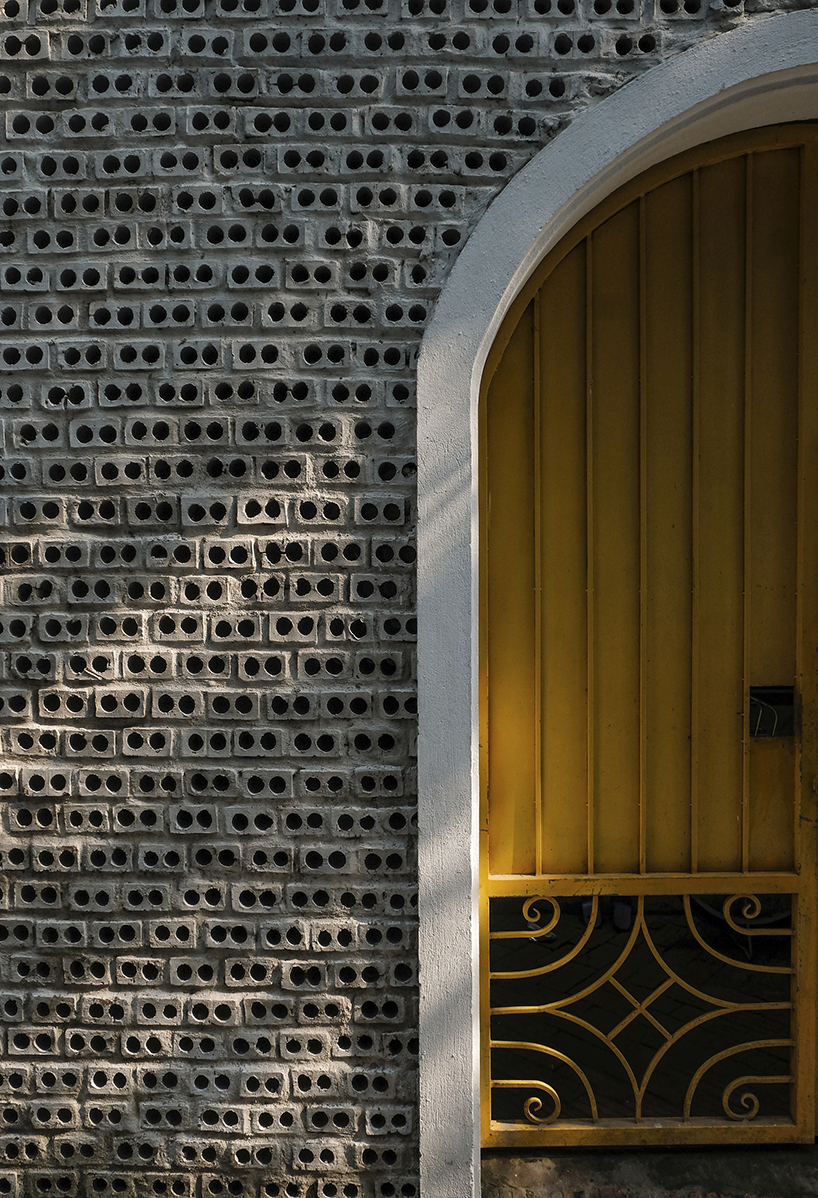
the perforated facade sustains privacy without any interference with airflow and ventilation

